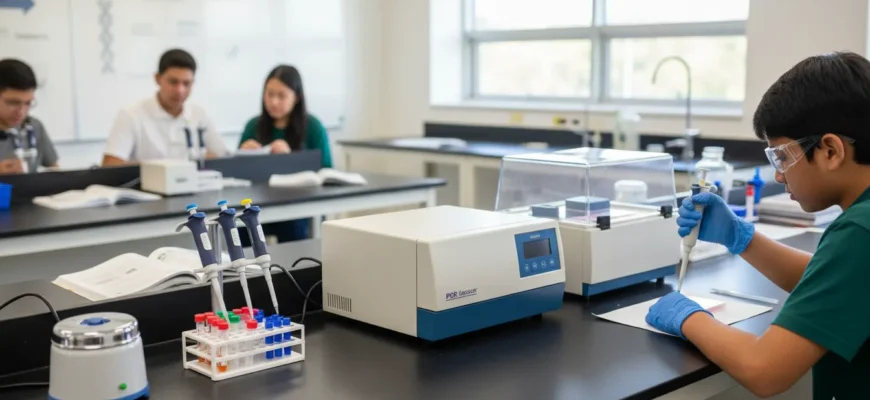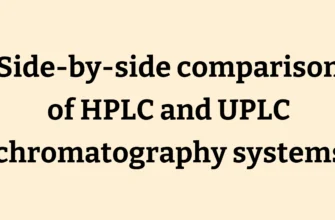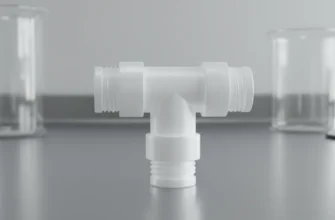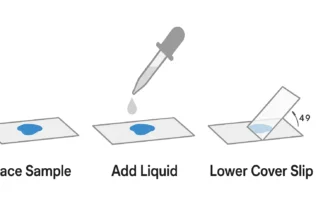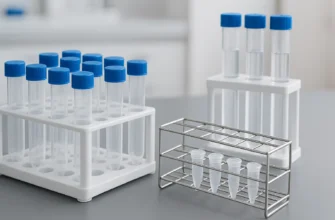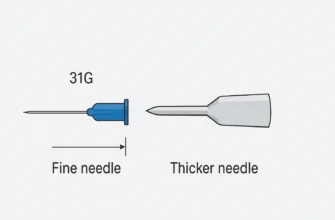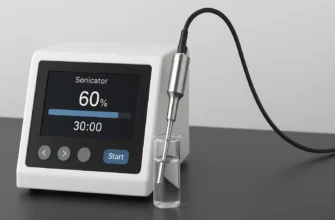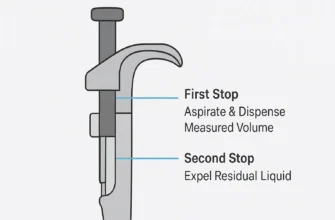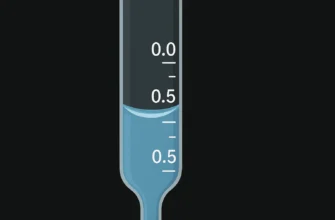Essential Biology Lab Supplies for Every Classroom
Key Highlights
Here are the essential takeaways for setting up effective biology lab supplies:
-
Hands-on learning requires proper lab equipment to make biology concepts tangible and engaging for students
-
Core equipment includes microscopes, glassware, measuring instruments, and safety equipment as foundational elements
-
Safety equipment and protocols are mandatory requirements, not optional additions, with OSHA-compliant PPE for every student
-
Pre-assembled biology kits versus individual supplies each offer distinct advantages depending on your curriculum needs and budget
-
Reputable suppliers provide quality-assured materials that meet educational safety standards and support effective learning outcomes
-
Trusted brands deliver reliable equipment from basic supplies to advanced molecular biology tools for classroom use
Introduction
Establishing a well-equipped biology laboratory transforms science education from passive textbook learning into dynamic, hands-on exploration. The right biology lab equipment enables students to engage directly with scientific concepts, fostering deeper understanding of topics ranging from cell biology to ecology. However, selecting appropriate supplies requires careful consideration of safety protocols, educational objectives, and budget constraints. This comprehensive guide provides updated information on essential laboratory equipment, safety requirements, and sourcing strategies to help educators create effective learning environments that meet current standards and regulations.
Core Biology Lab Equipment Every Classroom Needs
The foundation of any successful biology laboratory rests on carefully selected equipment that supports observation, measurement, and analysis. Modern educational standards emphasize inquiry-based learning, making it essential to have tools that allow students to conduct meaningful experiments safely and effectively.
Microscopes and Related Accessories
Microscopes remain the cornerstone of biology education, enabling students to explore cellular structures and microorganisms that would otherwise remain invisible. When selecting microscopes for classroom use, consider durability, ease of use, and optical quality as primary factors.
AmScope has established itself as a leading manufacturer of educational microscopes, with models specifically designed for classroom environments. The AmScope M150 Series offers magnification from 40X to 1000X with robust all-metal construction, making it ideal for students. For younger learners, the AmScope Beginner Microscope STEM Kit (M30-ABS-KT2-W) provides 120X to 1200X magnification with a comprehensive 52-piece accessory kit.
Essential microscope accessories include:
-
Prepared and blank slides for specimen observation
-
Cover slips to protect samples and lenses
-
Slide storage boxes for organization
-
Lens cleaning supplies for maintenance
-
Electronic pipettes for advanced liquid handling applications
Many educational suppliers offer complete microscope packages that include these accessories, providing convenient all-in-one solutions for classroom setup.
Glassware, Measuring Tools, and Lab Instruments
Quality glassware forms the backbone of laboratory operations. PYREX laboratory glassware, manufactured by Corning, has been the gold standard for over 100 years due to its exceptional thermal and chemical resistance. PYREX borosilicate glass can withstand temperatures from -40°C to 300°C and resists most acids, bases, and organic solvents, making it ideal for educational use.
Essential glassware and instruments include:
Basic Glassware:
-
Beakers and flasks for mixing and storing liquids
-
Test tubes and racks for handling multiple samples
-
Graduated cylinders for precise volume measurement (PYREX offers wheel-engraved graduations for accuracy)
-
Petri dishes for culturing microorganisms
-
Wash bottles for rinsing equipment
Measuring Instruments:
-
Analytical balances – OHAUS is recognized as a leading manufacturer, with their Pioneer Px and Explorer series offering high accuracy for educational applications
-
Pipettes and pipette tips for precise liquid transfer
-
Thermometers for temperature monitoring
Heating Equipment:
For safety in classroom settings, alcohol lamps or hot plates are preferred over traditional Bunsen burners, as they provide better control and reduced fire hazards.
Safety Equipment and Protocols for Classroom Labs
Laboratory safety is governed by strict regulations and standards that schools must follow. The Occupational Safety and Health Administration (OSHA) requires comprehensive safety protocols in educational laboratories, including proper ventilation, emergency equipment, and personal protective equipment.
Personal Protective Gear and Lab Safety Essentials
Personal Protective Equipment (PPE) is mandatory for all laboratory activities involving chemicals or biological materials. California’s safety mandates, which align with Cal-OSHA and NSTA standards, require:
Essential PPE:
-
Safety goggles or safety glasses – must meet EN166 standards in Europe and ANSI standards in the US
-
Lab coats or aprons to protect skin and clothing from chemical splashes
-
Disposable gloves – nitrile gloves are preferred over latex due to allergy concerns and superior chemical resistance
-
Closed-toe shoes to protect feet from spills and broken glass
Additional Safety Equipment:
-
Fume hoods for experiments involving volatile chemicals – must maintain face velocity of 60-120 fpm according to OSHA guidelines
-
First aid kits strategically placed throughout the laboratory
-
Fire safety equipment including fire extinguishers and fire blankets
Emergency Kits and Safety Signage
Emergency eyewash stations are required by OSHA regulation 29 CFR 1910.151(c) and must be located within 10 seconds travel time (approximately 55 feet) from any area where hazardous chemicals are used. According to ANSI/ISEA Z358.1 standards:
-
Eyewash stations must provide 0.4 gpm (1.5 L/min) flow for 15 minutes
-
Water temperature must be “tepid” between 60-100°F (16-38°C)
-
Stations must be hands-free once activated
-
Path to eyewash stations must be clear of obstructions
Emergency shower stations must also be within 10 seconds travel time and provide flow for 15 minutes. For battery charging areas specifically, eyewash stations must be within 25 feet of the hazard according to OSHA Standard 1926.441(a)(6).
Clear safety signage indicating locations of emergency equipment, safety procedures, and hazard warnings is essential for compliance and emergency response.
Choosing Between Biology Lab Kits and Individual Supplies
Educators face a fundamental decision when stocking their laboratories: purchasing comprehensive biology kits or selecting individual supplies. This choice significantly impacts budget allocation, curriculum flexibility, and long-term operational costs.
Pros and Cons of Pre-Assembled Kits
Pre-assembled biology kits offer several advantages for educators, particularly those new to laboratory management or working in homeschool environments. These kits are typically designed to align with specific curricula and textbooks, ensuring compatibility with lesson plans.
Advantages of Kits:
-
Convenience and time savings – eliminates the need to research and source individual items
-
Curriculum alignment – often designed to match specific textbook requirements
-
Cost-effectiveness – bundled pricing can be more economical than individual purchases
-
Quality assurance – reputable suppliers ensure all components meet educational standards
-
Comprehensive coverage – includes consumables, specimens, and equipment in one package
Disadvantages of Kits:
-
Limited flexibility – may include items not needed for specific lessons
-
Standardized approach – less ability to customize for unique teaching methods
-
Potential waste – some components may expire before use
-
Upgrade limitations – difficulty replacing or upgrading individual components
Customizing Your Lab Supply List
Individual supply selection provides maximum control over laboratory capabilities and allows for targeted investment in high-quality equipment. This approach works well for experienced educators with established curricula and specific teaching objectives.
Benefits of Individual Selection:
-
Precise budget allocation – purchase only needed items
-
Quality optimization – invest in higher-quality versions of frequently used equipment
-
Curriculum flexibility – adapt supplies to changing educational needs
-
Scalable investment – gradually build laboratory capabilities over time
-
Brand selection – choose preferred manufacturers for specific items
Considerations for Individual Purchasing:
-
Higher planning requirements – need detailed knowledge of equipment specifications
-
Potential cost increases – individual items may be more expensive than bundled options
-
Time investment – requires research into suppliers and product comparisons
-
Compatibility issues – ensuring all components work together effectively
When customizing supply lists, educators should create detailed inventories based on planned experiments, consider future curriculum changes, and factor in maintenance and replacement costs.
Top Suppliers and Brands for Biology Lab Supplies
The educational laboratory supply market features several well-established companies known for quality products and reliable service. Selecting appropriate suppliers ensures access to compliant, durable equipment that supports effective science education.
Recommended Online Sources and Retailers
Major Educational Suppliers:
Carolina Biological Supply Company has served the education market for over 90 years and offers the most comprehensive selection of biological specimens, including living and preserved organisms. Their product range includes dissection materials, microscopy supplies, and specialized biology equipment.
Flinn Scientific is recognized as a leading supplier for chemistry and physics education, offering extensive catalogs of chemicals, equipment, and safety supplies. Their lab safety courses are particularly valued by educators, and they provide curriculum-aligned materials with detailed instructions.
Ward’s Science focuses on innovative science supplies and hands-on learning solutions, offering products from basic equipment to advanced instrumentation. They emphasize curriculum integration and provide supporting educational materials.
Home Science Tools caters specifically to homeschool families and smaller educational settings, offering appropriately sized quantities and complete kits for home use. Their focus on accessibility and affordability makes them popular among individual educators.
Fisher Scientific supplies professional-grade laboratory equipment suitable for advanced high school programs. While primarily serving research institutions, they offer educational pricing and specialized classroom equipment lines.
Factors to Consider When Selecting a Supplier
Quality and Durability Considerations:
When evaluating suppliers, prioritize companies with established reputations for quality. PYREX glassware from Corning and OHAUS balances represent industry standards for durability and accuracy. Equipment from these manufacturers may cost more initially but provides better long-term value through extended service life and reliable performance.
Key Selection Criteria:
-
Educational experience – suppliers with extensive K-12 market knowledge better understand classroom needs
-
Safety compliance – all equipment should meet OSHA, ANSI, and relevant safety standards
-
Customer support – availability of technical assistance and educational resources
-
Return policies – flexible policies for defective or unsuitable equipment
-
Pricing transparency – clear pricing with educational discounts where available
-
Shipping capabilities – reliable delivery of fragile laboratory equipment
Budget Optimization Strategies:
Consider purchasing refurbished equipment from reputable suppliers to reduce costs while maintaining quality. Many suppliers offer certified refurbished items with warranties, providing significant savings on expensive equipment like microscopes and balances. Additionally, explore leasing options for high-value equipment, which can provide access to advanced tools while spreading costs over time.
Advanced Biology Laboratory Capabilities
Modern biology education increasingly incorporates molecular biology techniques that were once limited to research settings. PCR (Polymerase Chain Reaction) and gel electrophoresis are now accessible to advanced high school students through specialized educational equipment and kits.
Molecular Biology Equipment for Classrooms
PCR Education Systems:
Several companies now offer classroom-appropriate PCR systems. MiniPCR bio provides the blueGel™ electrophoresis system and GELATO™ professional-grade equipment designed specifically for educational use. These systems allow students to amplify DNA fragments and analyze results through gel electrophoresis, providing hands-on experience with fundamental biotechnology techniques.
Required Equipment for Molecular Biology:
-
Thermal cycler (PCR machine) for DNA amplification
-
Micropipettes for precise liquid handling (2-20 µL range typically required)
-
Gel electrophoresis apparatus with power supply
-
UV or blue light visualization system for DNA detection
-
Refrigeration for reagent storage
Safety Considerations for Advanced Techniques:
Molecular biology experiments require enhanced safety protocols, including proper ventilation for chemical handling and appropriate disposal methods for biological waste. Autoclave sterilization is essential for decontaminating biological materials, requiring temperatures of 121°C for at least 15 minutes.
Conclusion
Establishing a comprehensive biology laboratory requires careful planning, adherence to safety regulations, and strategic supplier selection. Modern educational standards emphasize hands-on learning experiences that prepare students for advanced study and careers in life sciences. By investing in quality equipment from reputable suppliers, implementing proper safety protocols, and choosing between kits and individual supplies based on specific educational needs, educators can create learning environments that inspire scientific curiosity and develop critical thinking skills.
The key to successful laboratory setup lies in balancing immediate budget constraints with long-term educational objectives. Whether starting with basic microscopy and simple experiments or incorporating advanced molecular biology techniques, the foundation of quality equipment, proper safety measures, and reliable supplier relationships will support effective science education for years to come. Regular equipment maintenance, ongoing safety training, and continuous curriculum evaluation ensure that laboratory investments continue to provide value and support student learning objectives.

